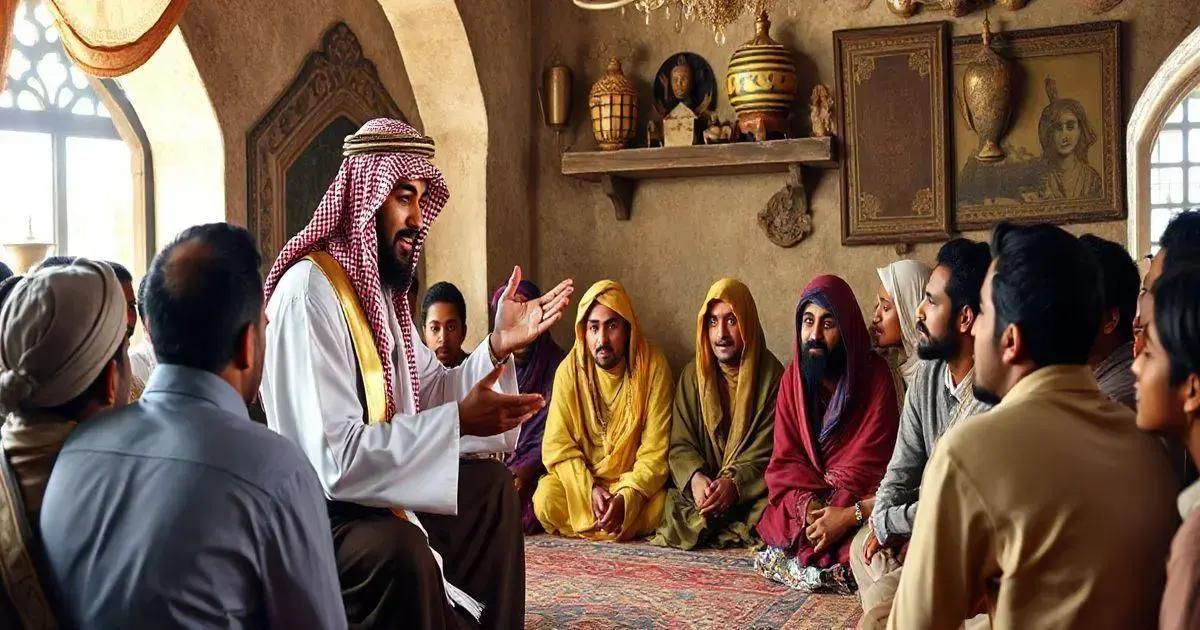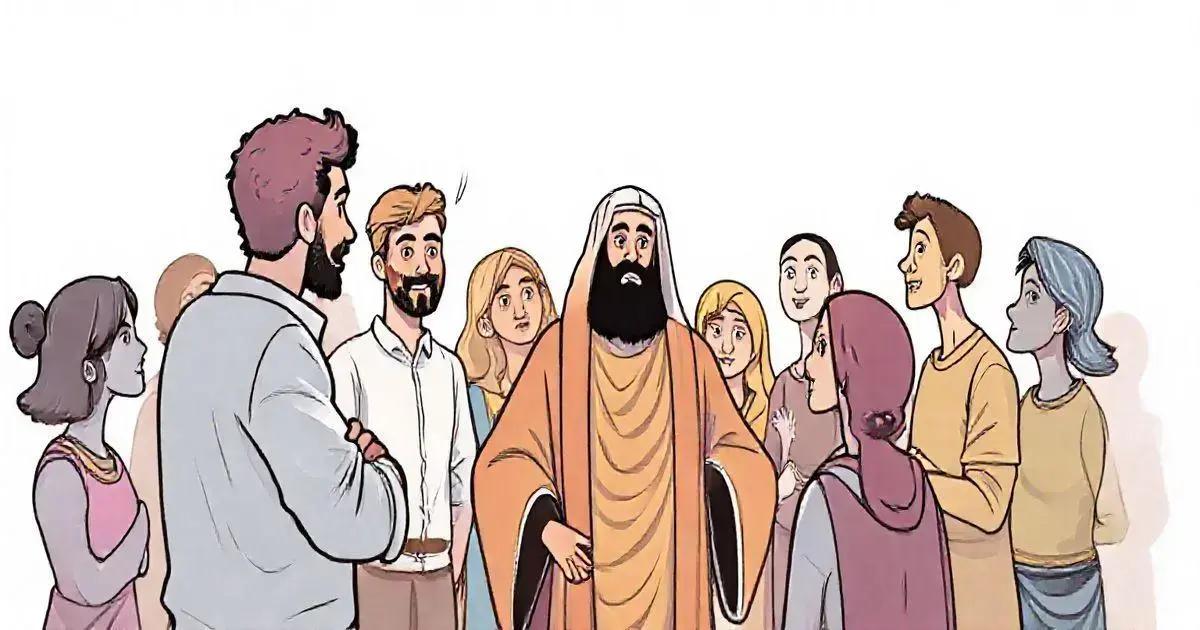The Arab Sheikh’s Trick is a fascinating cultural performance that engages audiences through storytelling and surprise, often resulting in confusion and heightened emotional responses. To mitigate these side effects, participants can engage mindfully, discuss their experiences, and practice critical thinking, ultimately enriching their understanding of this unique tradition.
The Arab Sheikh’s Trick has fascinated many with its perplexing nature and often unexpected side effects. As people engage with this intriguing method, they may find themselves experiencing a range of consequences that can alter their understanding and perception. In this article, we will dive deep into the various aspects of the trick, including its side effects, cultural implications, and tips to navigate these outcomes effectively.
Understanding the Arab Sheikh’s Trick

The Arab Sheikh’s Trick is a unique concept that combines elements of culture, folklore, and psychological influence. It is believed to originate from the tales of wise sheikhs who would use clever tactics to teach life’s lessons or impart wisdom. Understanding this trick involves examining its cultural roots and the ways it has evolved over time.
Historical Background
This trick is deeply rooted in Middle Eastern culture, where storytelling plays a significant role. Sheikhs often shared parables that contained moral lessons, and the tricks they employed were designed to engage and educate their audience.
Mechanics of the Trick
The core of the Arab Sheikh’s Trick revolves around surprise, expectation, and the power of illusion. It often involves creating an environment where the audience is led to believe something is true, only to reveal a deeper truth later. This method not only captivates the audience but also fosters critical thinking.
Psychological Aspects
Understanding the psychology behind the Arab Sheikh’s Trick is crucial. This trick often plays on common perceptions and biases, prompting individuals to reconsider their viewpoints. It serves as a reminder of the importance of questioning assumptions and being open to new ideas.
Modern Interpretations
In contemporary society, variations of the Arab Sheikh’s Trick can be found in various forms of entertainment and education. From movies to motivational talks, the essence of the trick remains influential, encouraging people to think beyond their immediate understanding.
Common Side Effects Explained

When engaging with the Arab Sheikh’s Trick, individuals may encounter several common side effects that are important to understand. Recognizing these effects can help manage expectations and enhance the overall experience.
Confusion and Disorientation
One of the most reported side effects is confusion. As the trick unfolds, participants might feel disoriented due to the unexpected twists and turns. This experience can prompt a reevaluation of their understanding, leading to a deeper insight.
Heightened Emotional Response
The Arab Sheikh’s Trick often elicits strong emotional reactions from the audience. Participants may feel excitement, amusement, or even frustration as they grapple with the trick’s revelations. This emotional engagement is part of its charm but can also be overwhelming for some.
Increased Critical Thinking
Another side effect is the enhancement of critical thinking skills. Engaging with the trick challenges people to question their assumptions and think more profoundly about the situation presented. This can lead to more thoughtful discussions and stronger problem-solving abilities.
Social Interaction Variations
This trick can influence social dynamics as well. Participants may either bond over shared experiences or feel isolated if they struggle to comprehend the trick’s mechanics. This duality is important to consider in group settings.
Cultural Impact of the Trick

The Cultural Impact of the Arab Sheikh’s Trick is significant and far-reaching. This trick is more than just a performance; it is a reflection of values, traditions, and social dynamics within Middle Eastern cultures.
Preservation of Storytelling Traditions
At its core, the trick helps preserve storytelling traditions. Oral traditions are vital in Middle Eastern societies, where sheikhs use tricks to engage their audiences. This method keeps cultural narratives alive and reinforces community bonds.
Educational Tool
The Arab Sheikh’s Trick often serves as an educational tool. By employing humor and surprise, it captivates the audience while imparting valuable lessons. This combination of entertainment and education fosters a love for learning and critical thinking among participants.
Social Commentary
The trick also acts as a form of social commentary. Through clever narratives, it can address issues such as morality, wisdom, and human behavior. This allows the audience to reflect on their own lives and societal norms, promoting deeper understanding and dialogue.
Global Influence
In recent years, the Arab Sheikh’s Trick has gained international recognition. It has influenced various art forms, including theater, literature, and film. As global audiences engage with these stories, they contribute to a richer, more diverse cultural exchange.
Tips to Mitigate Side Effects

To effectively engage with the Arab Sheikh’s Trick while minimizing potential side effects, several tips can be helpful. These strategies aim to enhance the experience and promote understanding.
Engage Mindfully
Approach the trick with an open and curious mindset. Being mindful allows you to fully participate without becoming overly confused or frustrated. Take breaks as needed to process what you’ve witnessed.
Discuss with Others
Sharing your thoughts and feelings with friends or family can help mitigate confusion. Having conversations about the trick helps to clarify misunderstandings and deepen appreciation for its cultural significance.
Research Background Information
Before engaging with the trick, consider learning about its cultural roots and historical context. Understanding the background can enhance your experience and reduce feelings of disorientation during the performance.
Practice Critical Thinking
Encourage yourself to pause and think critically about what you are witnessing. Reflect on the techniques used in the trick and the lessons it conveys. This process can shift the focus from confusion to enlightenment.
Understanding the Full Impact of the Arab Sheikh’s Trick
The Arab Sheikh’s Trick is more than just a captivating performance; it serves as a unique blend of cultural heritage, storytelling, and psychological engagement. By recognizing the common side effects and appreciating its cultural impact, participants can navigate this experience with greater awareness.
Implementing mindful practices and engaging critically can enhance the experience while mitigating any confusion or emotional responses that might arise. Ultimately, this trick encourages reflection and deeper understanding of one’s perspectives and societal norms.
As you explore the magic of the Arab Sheikh’s Trick, remember to embrace curiosity and dialogue, allowing the full richness of this tradition to inspire and enlighten.
FAQ – Frequently Asked Questions about the Arab Sheikh’s Trick
What is the Arab Sheikh’s Trick?
The Arab Sheikh’s Trick is a cultural performance that combines storytelling, surprise, and psychological engagement to convey lessons and entertain audiences.
What are the common side effects of experiencing the trick?
Common side effects include confusion, heightened emotional responses, increased critical thinking, and variations in social interaction.
How can I manage confusion while engaging with the trick?
Engaging mindfully and discussing your thoughts with others can help manage confusion and enhance understanding of the performance.
What cultural impact does the Arab Sheikh’s Trick have?
The trick preserves storytelling traditions, serves as an educational tool, offers social commentary, and influences global art forms.
What tips can help mitigate the side effects of the trick?
Tips include approaching the trick with an open mind, researching its background, practicing critical thinking, and discussing experiences with others.
Why is critical thinking important when watching the trick?
Critical thinking allows participants to reflect on their assumptions and gain deeper insights, transforming confusion into enlightenment.












